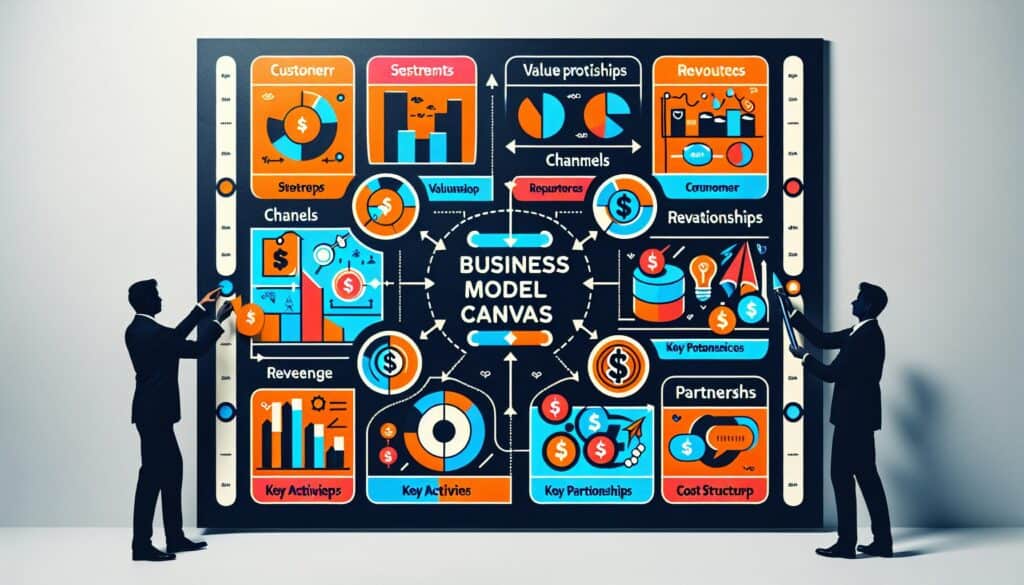通过客户群、价值主张、渠道、客户关系、收入流、关键资源、关键活动、关键合作关系和成本结构这九个关键构件,直观地描述、设计、挑战和调整商业模式。
- 方法: 精益西格玛, 制造业, 解决问题, 质量
商业模式画布

商业模式画布
- 敏捷方法论, 跨职能协作, 客户体验, 设计思维, 创新, 精益制造, 项目管理, 价值主张
目标
如何使用
- 企业家和战略家将其作为一种共同语言,用于规划现有商业模式或开发新模式,促进战略对话和创新。
优点
- 提供业务的整体视图,简单直观,促进沟通与协作,鼓励系统思考。
缺点
- 对于复杂的企业来说可能过于简单,无法从本质上验证假设(需要外部测试),如果不定期更新,可能是静态的。
类别
- 经济学, 构思, 产品设计, 项目管理
最适合:
- 以结构化和协作的方式开发、可视化和迭代新的或现有的商业模式。
The Business Model Canvas serves various applications across sectors such as technology, healthcare, and consumer goods, making it versatile for both startups and established enterprises looking to innovate or pivot. Organizations often use it in early project phases, such as ideation and feasibility studies, where cross-functional teams—including designers, engineers, and marketers— collaborate to explore new product offerings or refine existing ones. This methodology allows for the development of customer 人们 and value propositions, grounding discussions in real user needs and market challenges, which is particularly valuable in design thinking initiatives. Participants can work through issues related to revenue streams, distribution channels, and customer relationships, integrating stakeholder feedback directly into the model. Industries like fintech leverage the canvas to visualize complex regulatory requirements alongside innovative service delivery mechanisms, while companies in sustainable energy focus on environmental impacts and social value. The structure of the canvas encourages iteration, enabling teams to quickly adapt their approaches based on testing or market feedback, making it a dynamic tool for planning and strategy alignment. In workshops, the Business Model Canvas creates an engaging environment, where ideas can be swiftly sketched out and explored, leading to enhanced communication and collaboration within diversely skilled teams.
该方法的关键步骤
- Identify customer segments and define target groups.
- Clarify value propositions for each customer segment.
- Outline channels for customer communication and delivery.
- Specify customer relationships and engagement strategies.
- Detail key revenue streams from each segment.
- Identify key resources required to deliver the value propositions.
- List key activities that must be performed to create value.
- Define key partnerships that enhance business capabilities.
- Establish the cost structure associated with the business operations.
专业提示
- Integrate metrics directly into the canvas; quantify each segment for a clear understanding of performance and value generation.
- Conduct regular "Canvas Jam" sessions with cross-functional teams to encourage diverse perspectives and innovative ideas.
- Utilize digital tools to create an interactive Business Model Canvas that allows real-time updates and stakeholder engagement during brainstorming sessions.
相关文章
蒙特卡罗模拟
基于模型的测试
型号检查
混合方法研究
防错(Poka-Yoke)
任务简介测试